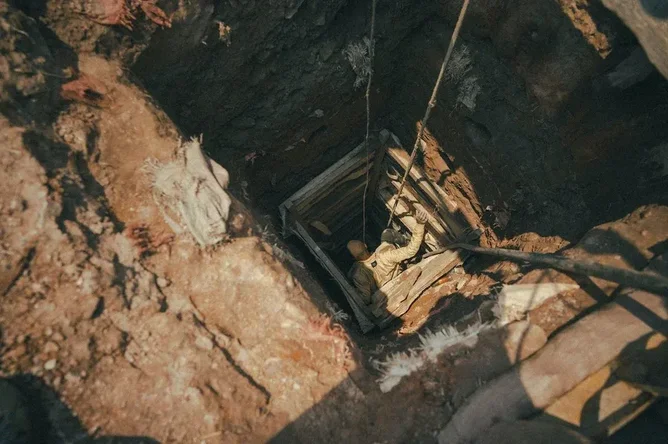We explore the mining, production and applications of cobalt, the critical mineral central to electric vehicles and renewable energy storage solutions.
Cobalt is a metallic element with the atomic number 27. It appears as a lustrous, silvery-blue metal in its pure form.
Cobalt occurs naturally in the Earth’s crust, often found in combination with other elements such as nickel, copper, and arsenic. The element was first isolated in 1735 by Swedish chemist Georg Brandt. Cobalt has unique properties that make it valuable for various industrial and technological applications, including a high melting point, ferromagnetism and resistance to corrosion.
How is cobalt mined?
Cobalt is primarily extracted as a by-product of copper and nickel mining operations. The mining process begins with the extraction of ore containing cobalt from underground or open-pit mines. After extraction, the ore undergoes crushing and grinding to reduce its size.
The next step involves flotation, where the ore is mixed with water and chemicals to separate the valuable minerals from waste rock. The resulting concentrate then undergoes further processing, including roasting, leaching, and solvent extraction.
These processes help to isolate cobalt from other metals. The final step involves electrowinning, where an electric current is used to deposit pure cobalt onto cathodes. This method produces cobalt with a purity of up to 99.8%.

Top cobalt-producing countries
The Democratic Republic of Congo (DRC) is the world’s largest producer of cobalt. The DRC accounts for over 60% of global cobalt production. Other significant cobalt-producing countries include Russia, Australia, and Canada. In recent years, countries like Cuba, the Philippines, and Madagascar have also increased their cobalt production.
China, while not a major producer of cobalt ore, is a significant player in cobalt refining and processing. The concentration of cobalt production in the DRC has raised concerns about supply chain stability and ethical sourcing. These concerns have prompted some countries and companies to seek alternative sources of cobalt or invest in recycling technologies.

Industrial applications of cobalt
Cobalt finds applications across various industries due to its unique properties. In the aerospace sector, cobalt is used in superalloys for jet engines, improving their performance and durability. The automotive industry uses cobalt in lithium-ion batteries for electric vehicles, enhancing their energy storage capacity.
In healthcare, cobalt-60 is used in radiation therapy for cancer treatment. The element is also crucial in the production of cutting tools, magnets, and wear-resistant alloys. Cobalt compounds are used as catalysts in the chemical industry and as pigments in ceramics and paints.
The growing demand for electric vehicles and renewable energy storage solutions has significantly increased the importance of cobalt in recent years.
The cobalt supply chain
The cobalt supply chain is complex and involves multiple stages from mining to end-use products. After extraction and processing, cobalt is typically sold to refiners and manufacturers. These companies further process the cobalt into various forms, such as powders, oxides, or alloys.
The refined cobalt is then sold to component manufacturers, who use it to produce batteries, magnets, and other products. These components are subsequently integrated into consumer goods or industrial equipment by original equipment manufacturers (OEMs).
The supply chain faces challenges related to transparency, traceability, and ethical sourcing. Initiatives like the Responsible Cobalt Initiative and the Cobalt Institute aim to address these issues by promoting responsible practices throughout the supply chain.
Cobalt and clean energy
Cobalt plays a crucial role in the transition to clean energy systems. Its primary contribution is in the production of lithium-ion batteries for electric vehicles and renewable energy storage. These batteries require cobalt to enhance their energy density and stability.
The increasing adoption of electric vehicles and renewable energy sources has led to a surge in demand for cobalt. This demand has raised concerns about potential supply shortages and price volatility. In response, researchers are exploring alternative battery chemistries that reduce or eliminate the need for cobalt.
Some companies are also investing in cobalt recycling technologies to create a more sustainable supply chain. The future of cobalt in clean energy applications will depend on technological advancements, market dynamics, and environmental considerations.



